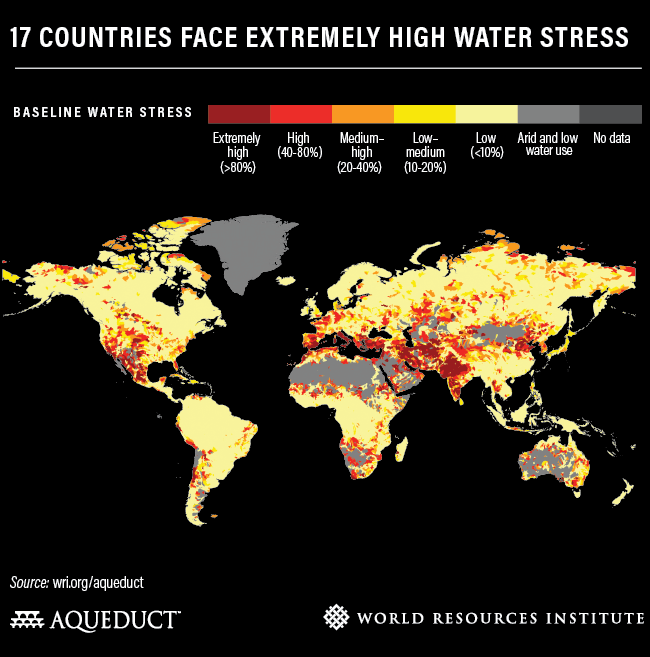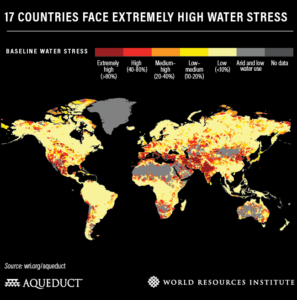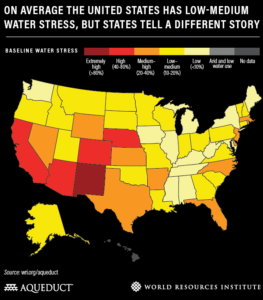The World’s Looming Water Crisis
Legal Planet: Environmental Law and Policy 2019-09-03


The World Resources Institute recently released a disturbing report chronicling increased, dire water shortages around the globe that threaten millions of the earth’s inhabitants. Climate change is a major contributing factor. Public health crises, social unrest and global political conflicts are the inevitable consequences if the problem is not addressed successfully–and soon.
“17 Countries, Home to One-Quarter of the World’s Population, Face Extremely High Water Stress“ paints a distressing picture indeed. The report’s bottom line: catastrophic water shortages, once a rare occurrence, are happening with increased frequency across the globe. According to the WRI report, two related phenomena are responsible: first, more frequent and intense droughts are occurring in both first- and third-world nations, due in significant part to the effects of climate change. Second–and perhaps less appreciated–WRI notes that global anthropogenic water withdrawals have more than doubled since the 1960’s, a trend that shows no sign of abating.
The results are dramatic: 17 nations that collectively are home to one-quarter of the Earth’s population are now under what WRI refers to as “extreme water stress.” The WRI report describes the Middle East and North Africa as “the most water-stressed region on earth.” India–the world’s second most populated country with 1.35 billion inhabitants–is another nation that is experiencing extreme (and steadily worsening) water shortages. These water crises are a combined result of increased diversions of surface water supplies and heightened extractions of groundwater resources, both at wholly unsustainable levels. (The report ranks 164 nations as experiencing various levels of water stress.)
The WRI report notes that among cities with more than 3 million residents, 33 of them–with a combined population of over 259 million inhabitants–currently face extremely high water stress. By the year 2030, WRI warns, those numbers are projected to reach 45 cities with a total of 470 million inhabitants.
As the New York Times reported in its summary of the WRI report, climate change is a major exacerbating factor: “As rainfall becomes more erratic, the water supply becomes less reliable. And as the days grow hotter, more water evaporates from reservoirs just as demand for water increases.” Additionally, in times of drought, groundwater is pumped to offset surface water shortages, often without regard to the finite nature of groundwater aquifers if not properly managed.
Even in nations experiencing what WRI refers to as relatively “low water stress,” pockets of extreme water shortages exist. Prominent examples include Capetown, South Africa; Beijing, China; southeastern Australia; Mexico City; and the southwestern United States.
Here in the U.S., the most dire water shortages affect the state of New Mexico, according to the WRI report. But close behind are Arizona, Colorado, Nebraska–and California. In each of these states, the most prominent cause of the growing water crisis is chronic overdrafting of finite groundwater aquifers.
On a positive note, the WRI report goes beyond describing the global crisis of looming water shortages and also offers several key policy recommendations to address the problem at both global and local levels: improved agricultural practices and efficiencies; investment in gray and green infrastructure; and increased water treatment, reuse and recycling,